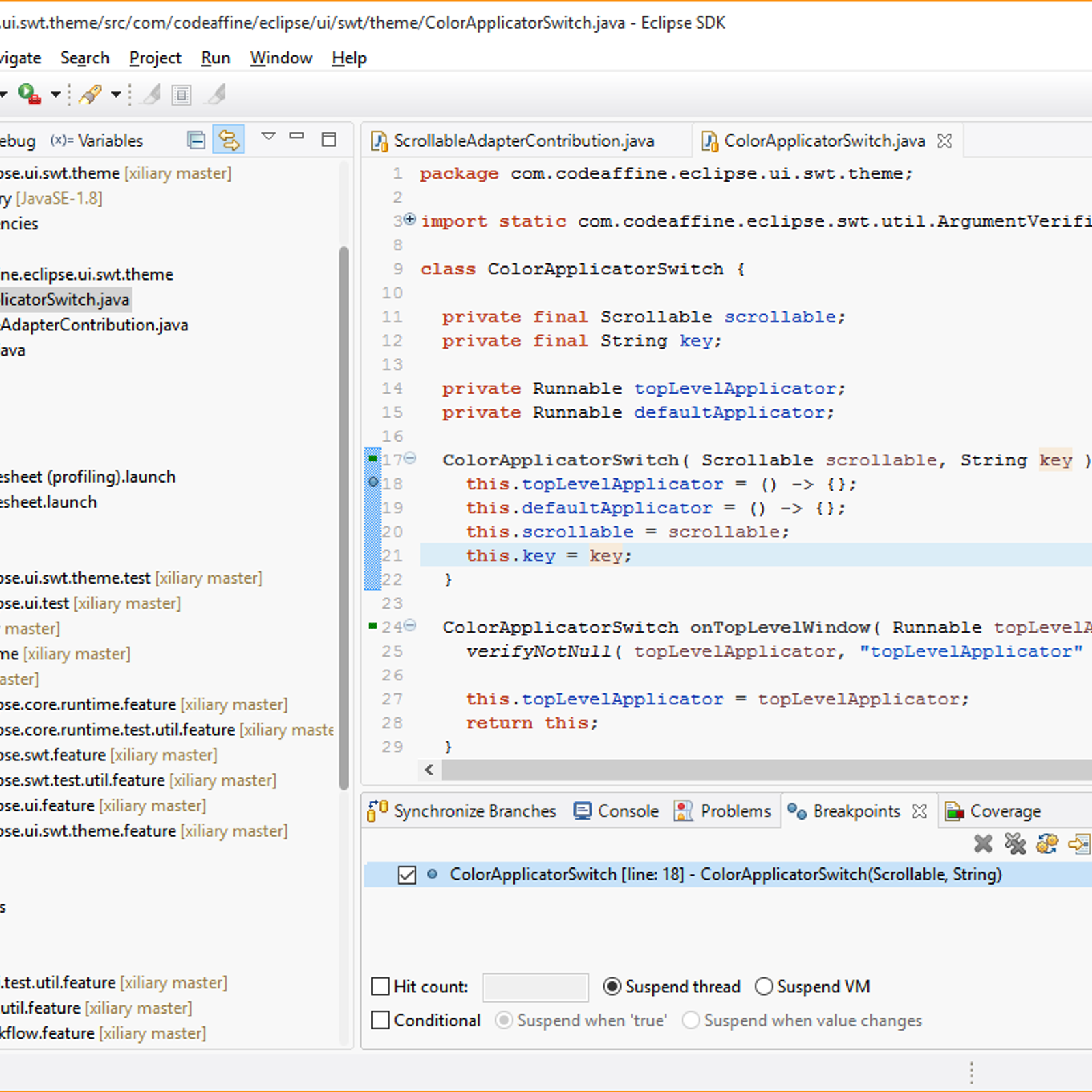Using exceptions as an abnormal return control structure
- Oct 06, 2000 To see the traces, you have to be debugging (i.e., F5 in MSDEV). If you are executing it, i.e., Ctrl-F5, you cannot see those traces. If you still have to trace it, you probably use message boxes and that's irritating. This tracer lets you create a console window for your windows application and traces everything on that window, hence the name.
- Oct 24, 2016 Building your C application with Visual Studio Code October 24th, 2016 Over the last few months, we have heard a lot of requests with respect to adding capability to Visual Studio Code to allow developers to build their C/C application.
- Make sure you choose the C version of the Console App template. It has the C, Windows, and Console tags, and the icon has ' in the corner. In the Configure your new project dialog box, select the Project name edit box, name your new project CalculatorTutorial, then choose Create.
- This worked perfectly with both C and C style IO. Now, it seems that it will only work with C style IO. What is the proper way to redirect things like cout to a console allocated with AllocConsole? Here's the code which used to work.
- On the Application Settings page, under Application type, select Windows application. Under Additional options, uncheck Precompiled header, then select Empty project. Choose Finish to create the project. In Solution Explorer, right-click the DesktopApp project, choose Add, and then choose New Item. In the Add New Item dialog box, select C File (.cpp).
- The snippet shows how to create a menu on a windows form and test it. Original code via BCX, modified to compile with Dev C as a Windows Application.
Mar 03, 2013 In this video I will explain how to add static text to your window, using windows.h / win32api / winuser.h (in C / C). I also touched on how to add a minimize box which I.
The exit() function is the 'terminate process normally' function.Not really. exit() means: terminate the program. Terminate it now. Don't call any destructors. Don't release file handles, mutexes, and other ressources... |
Care to provide support for that? Here's mine:
http://www.opengroup.org/onlinepubs/000095399/functions/exit.html
http://www.cplusplus.com/reference/clibrary/cstdlib/exit.html
http://msdn.microsoft.com/en-us/library/k9dcesdd(VS.80).aspx
It is clearly stated that exit
 () releases all the resources that it can (including file handles, mutexes, and other resources) and terminates the program normally --equivalent to
() releases all the resources that it can (including file handles, mutexes, and other resources) and terminates the program normally --equivalent to How To Count Things In A Windowed Application Dev C 4
returning from mainHow To Count Things In A Windowed Application Dev C Online
().Oh, and about using exceptions instead of exit():
http://www.codeguru.com/cpp/cpp/cpp_mfc/exceptions/article.php/c4111/
(The purpose and cleanliness of exceptions vs <other things>):
http://nedbatchelder.com/text/exceptions-vs-status.html
How To Count Things In A Windowed Application Dev C Free
How To Count Things In A Windowed Application Dev C 2017
http://cutebugs.net/files/cpp/index.htmlHow To Count Things In A Windowed Application Dev C Download
